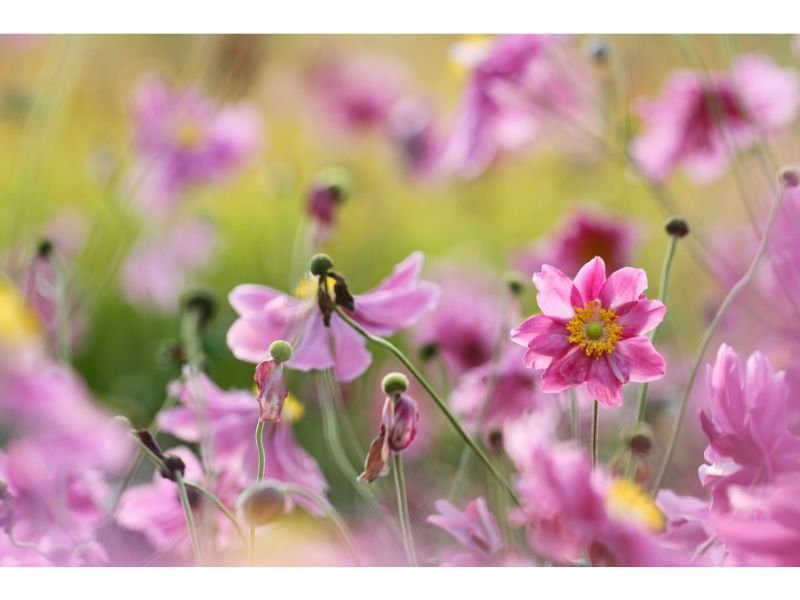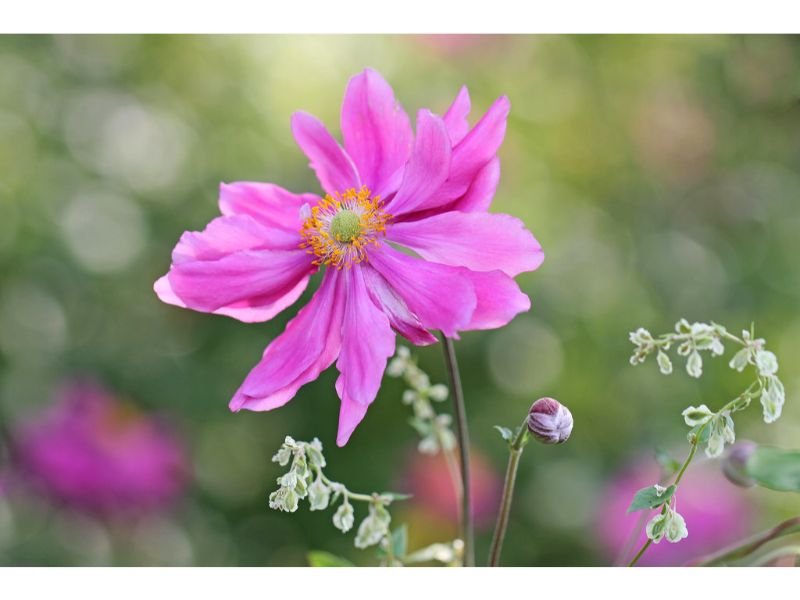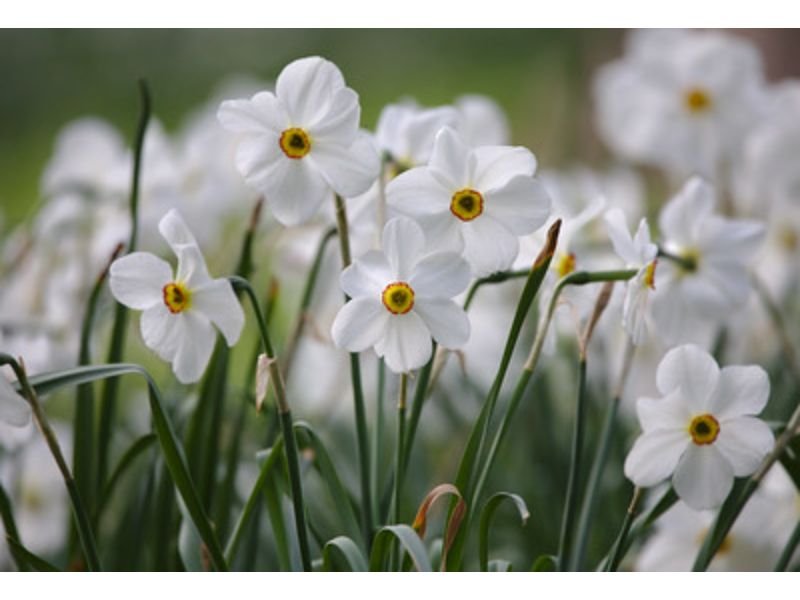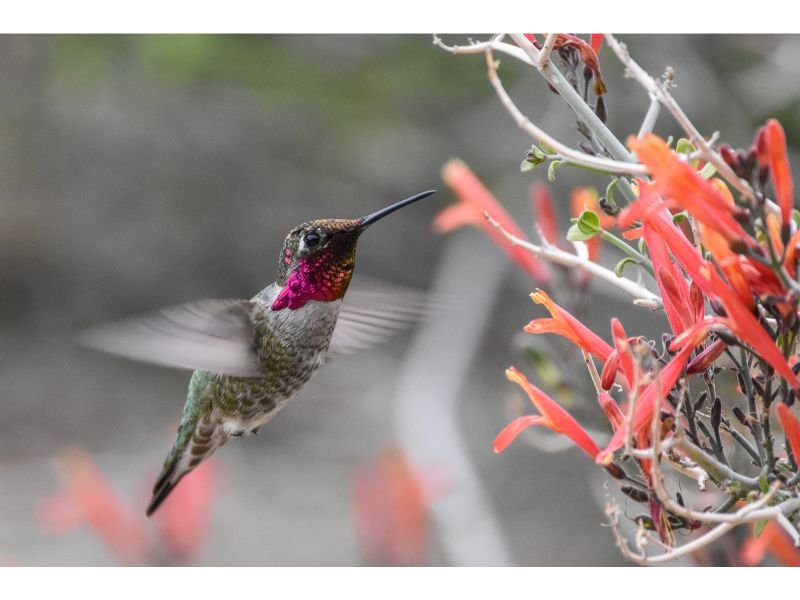With their vivid color and daisy-like petals, anemone prinz heinrich might receive the most attention for their appearance. But did you know that they’re also not a demanding flowering plant to grow? And that’s what we love about anemone and their varieties, they provide a broad range of colors and shapes but with similar growing requirements that are easy to replicate–and anemone prince Heinrich is not an exception! Let’s get to know the ins and outs of this stunning flower to keep them thriving.

Table of Contents
Anemone Prinz Heinrich Botanical Facts
Common Name(s): Prinz Heinrich anemone, Japanese anemone
Scientific Name: Anemone hupehensis ‘Prinz Heinrich’
Family: Ranunculaceae
Plant Type: Perennial
Country of Origin: Central and Southwestern China
Natural Habitat: Meadows, woodland, rocky slopes
Size: Growing and spreading to about 24 to 36 inches (60 to 90 centimeters)
Toxicity Level: Mildly poisonous if large quantities are ingested
Color(s): Bright magenta, greenish-yellow, bright yellowish-orange
What Makes Anemone Prinz Heinrich So Captivating?

Perhaps, we all can agree that the striking bright magenta of prinz heinrich anemone is what makes them stand out from the crowd. And let’s not forget their generally easy-to-maintain nature, which makes them perfect to be grown by novice or expert gardeners alike. This plant was cultivated by Wilhelm Pfitzer, a German horticulturist. Although named a Japanese anemone, the prinz heinrich anemone is actually a native plant of China but cultivated more in Japan.
Foliage and Blooms Appearance
The leaves of anemone prinz heinrich are medium to dark green with a deeply lobed shape. Each foliage has three main lobes that are divided into smaller lobes or leaflets. Unlike most anemone varieties, this plant features a double layer of daisy-like bright magenta petals, with a greenish-yellow center that is surrounded by a cluster of bright yellowish orange stamens.
Size and Growth
With their ability to grow and spread to a maximum size of 36 inches (90 centimeters), anemone hupehensis prinz heinrich is considered a compact-sized flowering plant. Growing from a fibrous root system, this plant is also moderate to fast-growing, especially if given the perfect growing requirements!
Can You Eat Prinz Heinrich Anemone?
The dazzling and cheerful color of anemone prinz heinrich might be tempting to eat or to be made as a garnish, isn’t it? Although the plant itself is not known to be poisonous for humans or pets, let’s not forget that anemone prinz heinrich is part of the Ranunculaceae Family, where the majority of plants coming from this genus contain a toxic chemical known as ranunculin. The bottom part? It’s best not to consume the plant and make sure to wear gloves when handling the plant.
Do Anemone Hupehensis Prinz Heinrich Produce Any Scents?
No, anemone prinz heinrich does not have a strong smell other than an earthy scent which is usual for most plants.
Anemone September Charm vs Anemone Prinz Heinrich: Similar But Different
At first glance, these two gorgeous plants may seem quite similar, but after investigation, there are some notable differences. Unlike prinz heinrich anemone, anemone september charm features not only bright magenta blooms, but also white, soft pink, and whitish-pink blooms. The petals are also not double-layered. Anemone’s September charm produces cup-shaped blooms with 5 to 6 petals on each flower.
What To Do With Prinz Heinrich Anemone?
There are many things to do with anemone prinz heinrich as long as you have that sparkling creativity. First, you can collect the plant’s seeds and give them as a gift for your loved ones or fellow plant enthusiasts. Next, as cut flowers, anemone prinz heinrich make a stunning addition to bouquets and floral arrangements, where they can last anywhere from one to two weeks! Additionally, their compact size also makes them well-suited for containers and pots.
Anemone Hupehensis Prinz Heinrich Growing Essentials

Light
Anemone prinz heinrich performs best in partial shade to full sun, and you should avoid planting them in areas with intense, direct sunlight at all costs. They also do well in zones 5 to 8, where generally, these areas meet the light requirements needed for the plant to thrive. If you’re planning to grow them outdoors, pick a location with warm morning sun and cooler afternoon shade.
Watering
What makes prinz heinrich anemones the same as their anemone cousins is their watering needs. This plant is a big fan of consistently moist soil that is not waterlogged, so to achieve this goal, you need to water them about once or twice a week, depending on your climate and location. Never let the soil become too dry either, so make sure to water regularly, especially during drought and hot summer.
Temperature and Humidity
For anemone hupehensis prinz heinrich, nothing can beat cooler temperatures and moderate humidity. They do well in temperatures between 55°F (12°C) to 70°F (21°C) and can handle light frost without any issue. Avoid areas with high heat and high humidity, as this can increase the risk of scorching, wilting, fungal problems, and root rot.
Soil
In addition to moist and well-draining soil, prinz heinrich anemone also requires soil with high organic matter that is neutral to slightly alkaline. To increase fertility, which the plant will thank you later, it’s a good idea to amend the soil with organic compost such as manure and vermicompost. They like being in sandy, chalky, or loamy soil, however, if your soil is heavy or clay-like, you need to add sand or perlite to improve drainage.
Fertilizing
Anemone prinz heinrich benefits from fertilizing to ensure healthy growth and abundant blooms, and you can fertilize them at two different times. First, in early spring before new growth appears, and repeat in early summer, about once every four weeks. Follow the manufactured instructions carefully and use only a balanced fertilizer with equal amounts of potassium, nitrogen, and phosphorus. Do not over-fertilize the plant as this can lead to excessive foliage growth and even damage their roots!
Pruning and Repotting
If you want to keep your prinz heinrich anemone looking the best, although regular pruning is generally not needed, occasional pruning is still recommended. Once the plant finished blooming or throughout the growing season, you can safely trim any damaged, diseased, or dead stems and foliage as needed.
Repotting, on the other side, is needed less often than pruning as long as the plant is not root bound, diseased, or outgrown its current pot. Gently lift anemone prinz heinrich and rehome them to a new pot that is slightly larger than the current one. Remember to not disturb the root too much as this can be stressful for the plant.
Propagating
There are various ways to propagate anemone prinz heinrich, but we recommend division and stem cuttings, as these methods are generally the easiest to perform. To do propagation by division, wait until the plant is dormant and carefully separate the rhizomes before replanting them individually in new, fresh, well-draining soil.
To propagate using stem cuttings, simply pick a healthy, disease-free stem with several leaves and cut just below the leaf node. Dip the cutting in rooting hormone and plant the cutting in an individual pot that is filled with well-draining and humus-rich soil.
Common Anemone Prinz Heinrich Botanical Problems
Although anemone prinz heinrich is generally a tough plant, sadly, this plant is still susceptible to gardening disasters. Aphids, powdery mildew, leaf spots, and slugs are among the most common, and fortunately, they can be treated in various ways. Either by ensuring good air circulation and good drainage, avoiding overwatering and over-fertilizing, or not over-crowd the plant, you don’t always need chemical treatments to battle these pesky pests and diseases!
Is Anemone Hupehensis Prinz Heinrich A Worthy Addition To Your Garden?
Being generally a hassle-free plant with such eye-catching blooms and foliage, there is no other answer rather than ‘yes’ when it comes to how worth it is to plant anemone prinz heinrich. So, if you’re looking for a low-maintenance yet stunning flowering plant to add to your garden, why not give anemone prinz heinrich a try and see how breathtaking it would be on your landscape?

New author in the hood. Loves gardening and flowers are my spirit animals (yes I know they are not animals but I insist). I will be covering most of the flowers’ topics here and occasionally random though as well.






